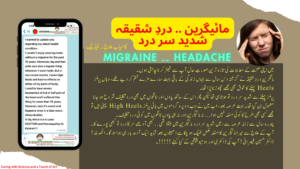MTEK is a useful memory aid to arriving at a correct prescription.
M = Miasmatic Totality
T = Totality of Symptoms
E = Essence (should include gestures, postures, behaviours etc)
K = Keynotes (which should encompass PQRS symptoms, refer §153 and §209 of Hahnemann’s Organon)
When the above criteria are considered and the steps below followed, a correct prescription can be made.
Step I Make the miasmatic diagnosis of the case i.e. ascertain the surface miasm.
Step II Assess the Totality of Symptoms + Essence + Keynotes and PQRS (if any) of the case and formulate the indicated remedy.
Step III Ensure that the indicated remedy covers the surface miasm, as diagnosed in Step I (refer Miasmatic Weightage of Medicines, the last section of this book).
Step IV Administer the remedy, which encompasses miasm as well as the Totality of Symptoms.
By such a prescription, which covers the miasmatic dyscrasia of the person, the chances of recurrence are eradicated and the axiom of ‘rapid, gentle and permanent recovery’ (Hahnemann’s Organon §3) is encompassed. In cases of one-sided disease with a scarcity of symptoms, the action of the anti-miasmatic remedy is centrifugal, and by bringing the suppressed symptoms to the surface allows a proper totality to be framed. The miasmatic consideration is therefore of great importance as demonstrated in the following example :
A person is suffering from symptoms of gastric ulcer, which has been confirmed by radiography. As ulceration is syphilitic, the surface miasm is therefore syphilitic also. Let us say that the totality of symptoms (physical, emotional and essence) of the person point towards Kali Bichromicum, an anti-syphilitic remedy. The choice of remedy is therefore simple, as Kali Bich covers both the totality of symptoms and the surface miasm of this gastric ulcer case. Kali Bich will peel away the outer layer and reveal a second layer underneath. This second layer may manifest perhaps through the appearance of warts or moles on the face, an indication of suppressed sycosis and the next assessment of the case should include this new surface totality. Following Kentian ideology we now know that there needs to be a change in the plan of treatment, that is, the previous syphilitic plan needs to change to a current sycotic plan, and a new anti-sycotic medicine needs to be selected based on the presenting totality.
WHY SHOULD WE KNOW THE MIASM?
A thorough dissection and incorporation of miasm in each case will help a homoeopathic prescriber in the following ways:
(i) A deep acting anti-miasmatic medicine by virtue of its centrifugal action will open up such cases (brings to the surface the suppressed symptoms) where the totality of symptoms cannot be framed due to a scarcity of symptoms (i.e. one-sided cases), and those cases with conjoint or contaminated pictures due to various physical, emotional or iatrogenic suppressions.
(ii) Also of importance is the value of selecting an anti-miasmatic medicine, which covers the psychic essence, nature and character of the individual in absence of any recognisable totality. For example, a patient presents with insomnia with no distinguishing modalities or other characters to complete the symptom. By ascertaining that person’s psychic essence or character (for instance, suspicious, jealous and exploiting in nature, representing sycosis) we can prescribe an anti-miasmatic medicine to cover the insomnia and open up the case. Thus, the anti-miasmatic medicine covering the essence of the person is capable of surfacing the suppressed symptoms and the totality can then easily be framed.
(iii) To be more confident in prescribing by including the surface miasm of the case in the consideration of the totality; as miasm, the dyscrasia of the person, constitutes a major part of that totality. Miasm and the symptoms are nothing but two sides of the coin, and one cannot be considered whilst ignoring the other. In fact, the totality of symptoms cannot be said to be total until and unless the selected remedy covers the miasm.
(iv) To evaluate the necessity of a change in the plan of treatment, or a change of remedy; when a few symptoms have disappeared after the first remedy has been administered, yet the miasmatic totality shows the preponderance of the same miasm on the surface, as that which was originally covered by the initial remedy. It indicates that the prescriber can stay with that initial remedy, as can be seen from the following example: a patient came with the presenting symptom of facial wart, for which Causticum was prescribed. As this medicine covers the miasm (here in this case, sycosis) as well as the symptom, the wart has fallen off; and the next suppressed layer, perhaps a profuse yellowish leucorrhoea (which was previously suppressed by cauterisation) comes to the surface. This symptom too is a sycotic manifestation, and is also covered by Causticum, then that remedy will totally eradicate the problem. So knowledge of miasm guides us to stay with the remedy and to allow its full and complete action.
(v) To evaluate the homoeopathic prognosis of the case, as removal of layers of suppression are manifested as clarity of symptoms, and also reflected by a quantum jump in the sense of well being. Deep acting anti-miasmatic medicines by virtue of their centrifugal action, will remove the layers of suppression which can be evidenced as follows:
a) A quantum jump in the sense of well being.
b) Improved energy.
c) Increased appetite.
d) Better quality of sleep.
e) Harmony and tranquility of temperament.
f) Stability (in obese people) or weight gain in underweight subjects.
g) Clarity of the existing or presenting symptoms or even lighter symptoms.
h) Suppressed symptoms (even of years ago) reappear on the surface and are permanently eradicated. This reappearance can be in a very transient form, which may not even be visible to the naked eye.
(vi) To fulfill Hahnemann’s three injunctions of cure: rapid, gentle and permanent.
(vii) Anti-miasmatic medicines help to clear up the suppressions (in relation to the past); clear up the presenting symptoms from their root or origin (in relation to the present); and clear up the susceptibility to get infection and thereby strengthening the constitution (in relation to the prophylactic aspect or future).
MIASMATIC THEORY : SCIENTIFIC BASIS :
A concept, theory or principle can be granted as scientific, if it fulfills the following criteria:-
a) It is based on clearly observed data, facts and phenomena.
b) It has been repeatedly confirmed by future observations and experiences under similar conditions.
c) It must give clear and correct guidance in anticipating the future events.
Note : All these conditions of the scientific method are fulfilled by the miasmatic concept and approach.
KEY WORDS AND Criteria :
BASIC CRITERIA OF THE FOUR GREAT MIASMS :
Miasm – Psora
Key Word- Irritation
Criteria – Lack, Scanty, Absence (correct spelling of absence and criteria)
Either physical or mental. E.g. atrophy, anemia, ataxia, anorexia etc.
Physical / Mental
Physical irritation is characterised by itching. Mental irritation leads to mental turmoil, characterised by anxiety, fear. Therefore any diseased condition characterised by deficiency, scantiness or absence, and all ‘hypo’ conditions reflects Psora. E.g. itching all over the body. E.g. anxiety, alertness, apprehension (especially of impending misfortune), which manifests as fear. Psora has the most fears of all the miasms. Deficient immunity resulting in increased susceptibility to catch infections, i.e. ‘hyper sensitivity’, is a psoric criterion.
Miasm – Sycosis
Keyword – Incoordination
Criteria – Hyper
Either physical or mental
Physical Mental All hypers and excesses are sycotic.
Incoordination in development. Incoordination in the sensorium or comprehension. E.g. hypertrophy, hyperplasia, hypersexuality, excess working (workaholics). Proliferation or excess. E.g. absentmindedness
E.g. tumours, fibroids, warts and any growths. Whilst concentrating on studies, the mind is distracted and wanders off elsewhere.
Miasm – Syphilis
Key words -Destruction and Degeneration
Criteria – ‘dyses’ and irregular
Either physical or mental
Physical/ Mental E.g. dystrophy, dysplasia,
Characterised by structural destruction and degeneration. Characterised by destruction and perversion. Dysphagia.
Irregular manifestations such as
i) Ulceration (where there is cellular destruction and degeneration)
ii) Pus formation (characterised by degenerated cellular debris)
iii) Necrosis (characterised by structural degeneration)
iv) Love for one’s own life is destroyed (suicidal tendencies).
v) Perverted sex and sexual cravings. Irregular peristaltic movement
resulting in dysenteric spasm and stool, or high systolic and low diastolic blood pressure in one individual. Such manifestations reflect irregularity in the circulatory mechanism.
Miasm – Tubercular
Key Word – Dissatisfaction
Criteria – Alternating, periodic, one sided, vague manifestations.
Manifestations.
Either physical or mental
Physical /Mental
i) Person craves sugar but it makes him sick and he becomes dissatisfied.
ii) Perverted sexual cravings or excessive masturbation make the person exhausted (this is from the syphilitic component of the miasm), or the person enjoys sex, but exhaustion does not permit so they remain unsatisfied.
iii) Changeable mentality (e.g. wants new clothes, changes occupation, studies, jobs, partners etc. very frequently and is never satisfied).
iv) Vagabond mentality (e.g. likes to travel often, cannot stay in one place). i) Alternation – e.g. constipation alternates with diarrhoea.
v) Periodicity – e.g. headache comes on every seventh day.
vi) One sided diseases – e.g. insomnia, anorexia, migraine, fatigue etc.
vii) Other conditions which present with ill-defined symptoms or too few symptoms.
viii) All allergic manifestations such as food and dust allergies.
ix) All haemorrhages.
x) All recurrent problems.
LOOK AND DIAGNOSE THE MIASM
1) PSORA:
Nervous, apprehensive, fearful.
Hair: Dry, harsh, dandruff++
Face: Bluish appearance, features of cyanosis.
Lips: Dry
Facial expression: Anxious.
Skin: Dry – Nails: Dry
Dress: Wears light colours
Personality: Affectionate, amiable, caring, cautious, collector, compassionate, conservative, considerate, dutiful (over the top) (Sycosis joins), easy-going, emotional, forsaken, kind, naive, peace-maker, perceptive, private, reserved, sensitive, thoughtful, worrier.
Hobbies: Watching TV, video, films (cinema), reading, games, playing cards.
Occupation: Caregiver, clerical, board nurse, nursery-nurse.
2) SYCOSIS:
Cunning, exploitative, jealous, suspicious mischievous.
Hair: Fishy smell, alopecia in circular spots.
Face: Yellowish colour, puffy, oedematous. Facial expression: Greedy.
Congenital/acquired overgrowth. Lips: Thickened. Skin: Thickened, fish-scale, vesicular
Nails: Thick, ridged, ribbed, corrugated, convex.
Dress: Wears yellow/bright colours, (ostentatious and fatuous)
Personality: Aggressive, ambitious, arrogant, assertive, bossy, charismatic, enthusiastic, fanatic (if destructive Syphilis joins), (excess due to greed also present), faultfinding, friendly, gregarious, humorous, intense, list maker, manipulative, outgoing (if changeable Tubercular joins), perfectionist, planner, possessive, ritualistic serious, sincere, sociable (Tubercular joins)
Hobbies: Gambling, casinos, bingo, shopping, fast dancing (rock and roll).
Occupation: Accountant, chief executive officer, dictator (successful), doctor (Psora), lawyer, pimp, policeman, politician, receptionist, stockbroker. (Syphilis joins), under-cover agent.
3) SYPHILIS:
Vindictive, spiteful, dull.
Hair: Falling from all over the body
Face: Reddish appearance, cleft palate. Facial expression: Cruel, brutal.
Allied congenital abnormalities.
Lips: Cracked – Skin: Cracks and fissures, ulcerative.
Nails: Thin, break easily, channeled, pitted, concave (spoon shaped).
Dress: Wears non-matching colours, dark colours, black.
Personality: Abusive, closed, depressed, dogmatic, pessimistic, revengeful, rude. Lack of conception and realization.
Hobbies: Hunting, wrestling, boxing, martial arts, archery, ten-pin bowling, speedway, coarse fishing (sea fishing).
Occupation: Butcher, manual labourer, publican.
4) TUBERCULAR:
Discontented, independent, stubborn, changeable
Hair: Breaks, splits and sticks together
Face: Purple colour, flushed cheeks. Facial expression: Indifferent.
Lips: Bright red, flushing. Skin: Flushing easily, bleeding.
Nails: Glossy, white spots.
Dress: Wears red, purple and pinkish colours.
Personality: Adventurous, artistic, bubbly, changeable, creative, fearless, fun loving, independent, rebellious.
Hobbies: Creative hobbies, cooking, knitting, drawing, acting, traveling, golf, skiing, horse riding, motor racing, music, gardening, lake fishing, swimming.
Occupation: Actor, air hostess, artist, craftsman/artisan, detective, driver, gardener, kindergarten nurse (Psora joins), postman, shopping (likes changes) salesman, teacher.





